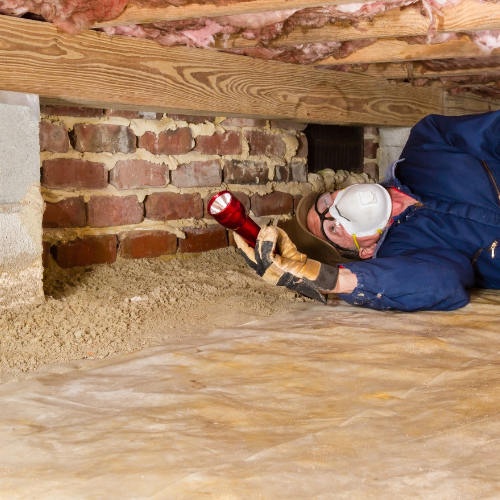
First, we’ll conduct a thorough inspection to identify the type of mold in your home and the extent of the damage. The best way to find out what kind of mold you have is to conduct a third-party mold test. This is done by having an independent, licensed Mold Assessment Consultant (MAC) or industrial hygienist take and examine samples from the areas where you suspect there is mold. A visual test can also be done, but it’s more accurate to take samples.
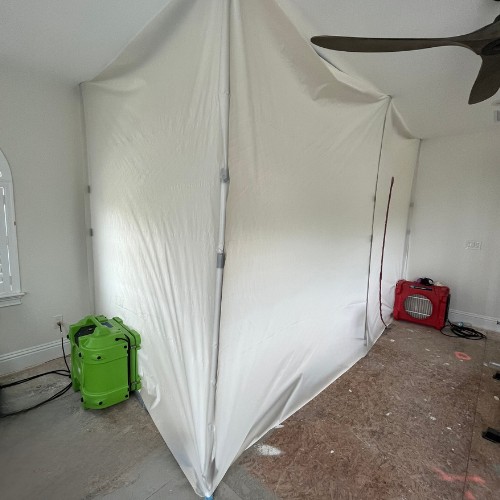
Once we know the kind of mold is present and how much damage it has done, it must be stopped from spreading further.
The affected area is sealed off using plastic sheeting, and the nearby vents and doors are closed off or covered.
Then, we create negative air pressure with specialized equipment to prevent mold-contaminated air from getting out.
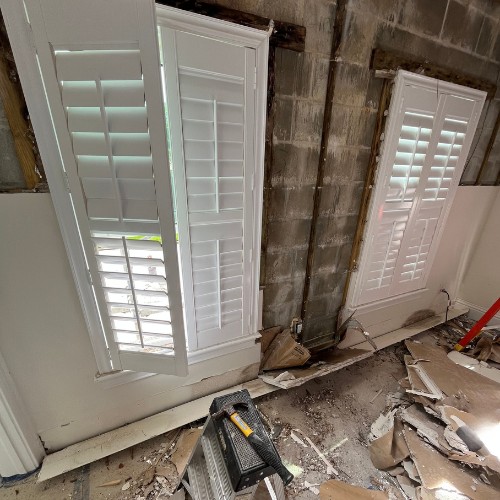
If materials have been significantly affected by mold, they may need to be removed altogether. This may include your carpeting, insulation, or drywall. The materials removed will need to be disposed of properly.
We will wrap them in plastic and transport them to the designated waste-removal site.
Fortunately, a High Efficiency Particulate Air (HEPA)-filtered vacuum and a botanical-based cleaning solution can remove mold from some hard surfaces, such as concrete or metal.
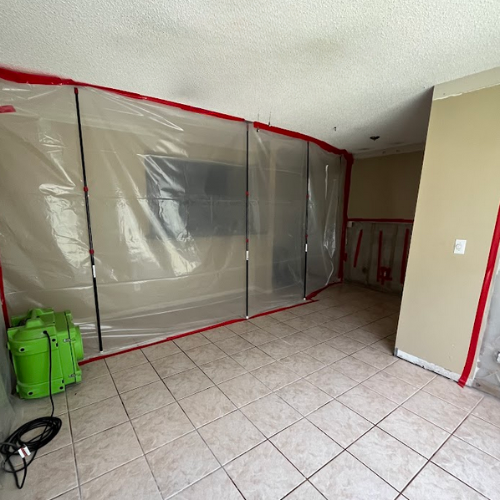
When the affected materials are removed, it’s important to ensure no spores are left floating in the air.
We use HEPA-filtered air purifiers to remove any spores from the area. Then, the space undergoes a thorough drying process using fans and humidifiers to prevent the mold from growing back.
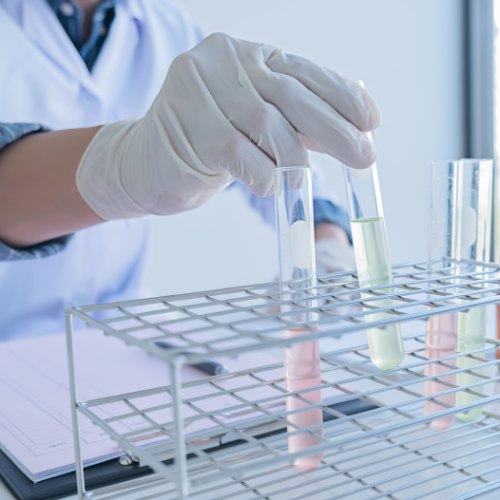
Once the mold has been removed, disposed of, and the space thoroughly cleaned and dried, it’s crucial to monitor the affected area.
A third-party expert will again take samples to check if mold levels are safe. This may need to be done periodically to ensure any signs of moisture and returning mold are caught early and can be dealt with properly.
There are a few signs to look for when it comes to mold in your home or business premises. Sometimes it may be quite obvious, and other times the signs are more subtle. Keep an eye out for:
If you notice any of these signs, it’s essential to take action right away.
If mold—especially black mold—is affecting your health, you may notice a range of symptoms.
You may have a cough, congestion, irritated eyes, or skin allergies. You may also notice you have trouble remembering things, get confused easily, or that you can’t concentrate well or for long. You may even experience anxiety or depression.
Get assistance from your doctor and a mold removal specialist like Dry Out Daddy immediately if you have any of these issues.
While Tampa is predisposed to mold, there are some simple things you can do to help prevent it.
Make sure your home is well ventilated and that there are no water leaks. Using an air conditioner, especially in the summer, can go a long way. You can also use detergent solutions to clean any areas you suspect may be at risk of mold.
However, sometimes the problem is beyond do-it-yourself management. Perhaps you’ve bought a new home with an existing mold problem, experienced a roof leak or flooding after a storm, or a corner of mold has gone unnoticed for some time. That’s where Dry Out Daddy comes in.
If you haven’t managed to keep mold in your home at bay, we can help. We provide mold eradication and restoration services. We’ll assess the situation, sort out the problem, and restore your home to its former glory.
We follow five key steps to ensure effective mold restoration services in Tampa.
Tampa’s warmer, tropical climate creates an ideal environment for mold. The combination of high humidity, frequent rain, and occasional flooding can lead to persistent mold problems in homes and businesses. Understanding how mold develops and spreads is essential to effectively managing and preventing it.
Mold plays a natural role in the environment, breaking down organic matter outdoors. However, when it grows indoors, it can cause a range of issues, including:
Being able to identify mold early can prevent more extensive damage. Common indicators of mold in a home or business include:
Mold remediation involves more than just cleaning visible mold—it requires addressing moisture sources and preventing future growth. At Dry Out Daddy, our approach to mold remediation follows scientifically backed best practices.
A thorough inspection helps determine the extent of the mold issue. In some cases, a licensed Mold Assessment Consultant (MAC) may perform lab testing to identify the type of mold present.
Mold spores can spread through the air, so affected areas are sealed off to prevent cross-contamination. HEPA air filtration systems capture airborne mold spores, improving indoor air quality.
Using industry-approved methods, we remove mold growth from affected surfaces. Antimicrobial treatments are applied to prevent future outbreaks, ensuring a healthier indoor environment.
Since mold thrives in moist conditions, reducing indoor humidity is crucial. Dehumidifiers and ventilation improvements help maintain optimal humidity levels and prevent mold regrowth.
After mold removal, restoration may involve replacing damaged materials such as drywall or flooring. Proper insulation and ventilation improvements can further reduce the risk of future mold problems.
Understanding how to manage moisture is key to preventing mold growth. Consider these steps to maintain a mold-resistant home:
While small mold problems may be manageable with household cleaning solutions, significant mold infestations require professional attention. Certified mold remediation specialists use advanced techniques to safely and effectively remove mold while minimizing health risks.
If you suspect mold in your home or business, seeking professional guidance can ensure safe and thorough remediation. Understanding the science behind mold growth and removal helps homeowners make informed decisions about their indoor environment.
For expert assistance in mold remediation, contact Dry Out Daddy at 813-922-1484 for a consultation.
Mold damage can look very different depending on your facility which is why we’re prepared and have developed propriety protocol for both residential facilities and commercial properties.
Got questions about mold removal? You’re not alone. Mold can be a serious issue in humid climates, and understanding how to handle it is key to protecting your home and health. Below, we’ve answered the most common questions homeowners ask about mold remediation, insurance coverage, and prevention. If you don’t see your question here, contact us for expert advice!
If you notice a musty smell, visible mold growth, water damage, or experience increased allergy symptoms, you may need professional mold remediation. Mold spreads quickly and can affect indoor air quality, so it’s best to have an expert inspect your property.
It depends on the cause of the mold. If the mold resulted from a covered water damage event (like a burst pipe or storm damage), insurance may cover remediation. However, mold due to neglect or high humidity is typically not covered. Check with your insurance provider for specifics.
The process typically takes 1 to 5 days, depending on the extent of the mold growth and the affected area. After mold removal, drying and prevention steps ensure it doesn’t return.
While small areas (less than 10 sq ft) can be cleaned with household mold removers, professional remediation is required for larger infestations, hidden mold, or mold affecting porous materials like drywall and insulation. DIY removal may not eliminate airborne spores, leading to regrowth.
To prevent mold, keep indoor humidity below 50%, fix water leaks promptly, ensure good ventilation in bathrooms and kitchens, and use mold-resistant materials in damp areas. Regular inspections can catch mold before it spreads.